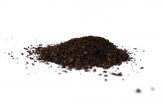(Press-News.org) The use of cholesterol-lowering statins when men initiated androgen deprivation therapy for prostate cancer was associated with longer time to progression of the disease, according to an article published online by JAMA Oncology.
The gene SLCO2B1 acts as a transporter that enables a variety of drugs and hormones to enter cells. For example, dehydroepiandrosterone sulfate (DHEAS) is a precursor of testosterone and uses SLCO2B1 to get into cells. Similarly, statins use SLCO2B1 to enter cells as well. Previous research has suggested an association between statin use and improved clinical outcomes for prostate cancer. But little is known about the impact of statin use and response to androgen deprivation therapy (ADT), the cornerstone of treatment for metastatic hormone-sensitive prostate cancer, according to the study background. Conceivably, statins might interfere with the ability of DHEAS to get into cells and thus delay resistance to ADT by this mechanism.
Philip W. Kantoff, M.D., of the Dana-Farber Cancer Institute, Boston, and coauthors examined statin use and time to progression of disease during ADT for prostate cancer.
The authors conducted in vitro studies on prostate cancer cell lines to examine whether statins interfered with DHEAS uptake. Statin use was analyzed in 926 patients who had ADT for prostate cancer between 1996 and 2013.
The authors found in the in vitro studies that statins block DHEAS uptake by competitively binding to SLCO2B1.
Of the 926 patients in the study, 283 (31 percent) were taking a statin when they started ADT. After a median follow-up of nearly six years, 644 patients (70 percent) experienced disease progression while receiving ADT. The overall median time to progression was 20.3 months but men taking statins had a longer median time to progression during ADT compared with nonusers (27.5 months vs. 17.4 months), according to the study.
"Our in vitro finding that statins competitively reduce DHEAS uptake, thus effectively decreasing the available intratumoral androgen pool, affords a plausible mechanism to support the clinical observation of prolonged TTP [time to progression] in statin users," the article concludes.
(JAMA Oncol. Published online May 7, 2015. doi:10.1001/jamaoncol.2015.0829. Available pre-embargo to the media at http://media.jamanetwork.com.)
Editor's Note: An author made a conflict of interest disclosure. The research was funded by the Dana-Farber Prostate Cancer SPORE and by the Department of Defense. Please see the article for additional information, including other authors, author contributions and affiliations, financial disclosures, funding and support, etc.
Editorial: Progress in Understanding What is Being Statin(ed) in Prostate Cancer
In a related editorial, Jorge D. Ramos, D.O., and Evan Y. Yu, M.D., of University of Washington School of Medicine, Seattle, write: "Harshman et al have made a compelling argument for a biologic mechanism of action of statins in advanced prostate cancer through competitive inhibition of the uptake of DHEAS via SLCO2B1-encoded transporters. However, randomized, prospective validation of the clinical benefits of statin use in advanced prostate cancer is necessary. ... In all, Harshman et al have conducted an interesting analysis linking in vitro preclinical data with retrospective patient outcomes, providing a framework for future evaluation. Nonetheless, the current data are not sufficient to support incorporation of statin use into clinical oncology practice for patients with prostate cancer and additional studies are required."
(JAMA Oncol. Published online May 7, 2015. doi:10.1001/jamaoncol.2015.0833. Available pre-embargo to the media at http://media.jamanetwork.com.)
Editor's Note: Please see the article for additional information, including other authors, author contributions and affiliations, financial disclosures, funding and support, etc.
INFORMATION:
Media Advisory: To contact corresponding author Philip W. Kantoff, M.D., call John W. Noble at 617-632-5784 or email johnw_noble@dfci.harvard.edu. To contact corresponding editorial author Evan Y. Yu, M.D., call Leila R. Gray at 206-685-0381or email leilag@uw.edu.
To place an electronic embedded link in your story: Links will be live at the embargo time: http://oncology.jamanetwork.com/article.aspx?doi=10.1001/jamaoncol.2015.0829 and http://oncology.jamanetwork.com/article.aspx?doi=10.1001/jamaoncol.2015.0833
Crigler-Najjar syndrome is a rare autosomal recessive disorder caused by mutations in the UGT1A1 gene, which result in the toxic accumulation of bilirubin, a substance made by the liver in the body. Indeed, when the UDP-glucuronosyltransferase 1 isotype A1 (UGT1A1), the enzyme responsible for removing bilirubin, doesn't work, the substance accumulates, causing a severe and chronic jaundice, and becoming toxic for the brain and leading to lethality.
Gene therapy has allowed the restoration of an equivalent level of bilirubin to those found in healthy animals
Federico ...
This news release is available in French. Metabolic complications of obesity and overweight, such as type 2 diabetes, are an important challenge to public health. Teams led by Nicolas Venteclef, Inserm Research Fellow (Cordeliers Research Centre, Inserm/Pierre and Marie Curie University Joint Research Unit 1138, Paris, France) and Irina Udalova (Kennedy Institute of Rheumatology, University of Oxford, UK) in collaboration with several teams, have succeeded in elucidating part of the mechanisms involved in the development of these metabolic complications associated with ...
Obesity and depression -- not only lack of sleep -- are underlying causes for regular drowsiness, according to Penn State College of Medicine researchers. They say these findings could lead to more personalized sleep medicine for those with excessive daytime sleepiness (EDS).
As much as 30 percent of the general population experiences EDS -- daytime drowsiness or sleepiness occurring throughout the day that can include irresistible sleep attacks. Feeling overly tired during the day can reduce job productivity and increase errors and absenteeism and may lead to more serious ...
A new, noninvasive nuclear medicine test can be used to determine whether aromatase inhibitor treatment will be effective for specific cancer patients, according to a recent study reported in The Journal of Nuclear Medicine. The research shows that a PET scan with the ligand C-11-vorozole reliably detects aromatase in all body organs - demonstrating the value of its future use to pre-determine the effectiveness of the treatment for breast, ovarian, endometrial and lung cancer patients, potentially reducing unnecessary treatment costs and adverse effects.
Aromatase inhibitors ...
CHICAGO (May 7, 2015): Patients undergoing colorectal operations who participated in an enhanced recovery program left the hospital sooner and had significantly lower hospital costs than patients who had the traditional approach to their care, according to a new study, which also found further postoperative improvements after adding an infection prevention protocol. The study is published online as an "article in press" on the Journal of the American College of Surgeons website in advance of print publication later this year.
"Enhanced recovery after surgery" is a multicomponent ...
Schizophrenia affects millions of people worldwide but the cause of its wide-ranging symptoms remains largely unknown.
At Brandeis University, researchers believe they have discovered an abnormality in the schizophrenic brain that could be responsible for many of the disease's symptoms and could provide a drug target for therapeutic treatments.
Led by John Lisman, the Zalman Abraham Kekst Chair in Neuroscience and professor of biology, the research team published their findings in a recent issue of the Journal of Biological Psychiatry. The paper was co-authored by ...
Traditionally, patients with endometrial cancer -- cancer of the womb lining -- have their disease risk classified using a combination of clinical and tissue characteristics, including their age and the growth and invasion of their tumour.
Around 15-20% of patients have high-risk disease, but it is unclear what the best treatment approach is for these patients. Now Manchester researchers have investigated genetic alterations in high-risk endometrial cancer, to see if they could be used to create tumour subtypes.
Professor Richard Edmondson, Professor of Gynaecological ...
Amsterdam, May 7, 2015 -- Elsevier journal Maturitas today announced the publication of a position statement by the European Menopause and Andropause Society (EMAS) covering non-hormonal management of menopausal vasomotor symptoms.
Hot flashes are a common menopausal symptom. They tend to intensify during the perimenopause and usually subside within 5 years after the final menstrual period. However in some women frequent hot flashes are a long term problem and may last for more than 7 years. While estrogen-based menopausal hormone therapy is the most effective treatment ...
It has traditionally been assumed that these by-products - coffee grounds and coffee silverskin, have few practical uses and applications. Spent coffee grounds are sometimes employed as homemade skin exfoliants or as abrasive cleaning products. They are also known to make great composting agents for fertilizing certain plants. But apart from these limited applications, coffee by-products are by and large deemed to be virtually useless. As such, practically all of this highly contaminating 'coffee waste' ends up in landfills across the globe and has a considerable knock-on ...
This news release is available in German.
How did the first complex eukaryotic cells with their organelles develop from simple prokaryotes, i.e. bacteria or archaea? This is a highly debated topic in evolutionary research but the question remains largely unresolved. Genomic research has shown that the organelles delivering energy in eukaryotic cells stem from an early bacterial symbiont. Since Archaea have also played an important role in the evolution of eukaryotes, current models suggested, that a primordial Archaeon might have engulfed a bacterium and in this ...

